
100 national projects and achievements since launch of Oman Vision 2040
In the first five years of Oman Vision 2040, more than 100 national achievements were delivered across its four pillars.
According to data issued by the Oman Vision 2040 Implementation Follow-up Unit, the past five years witnessed the implementation of hundreds of projects, initiatives, programmes and national plans. These efforts positively supported the priorities of the Vision within four pillars focused on people and society, economy and development, environment and sustainability, and governance and institutional performance.
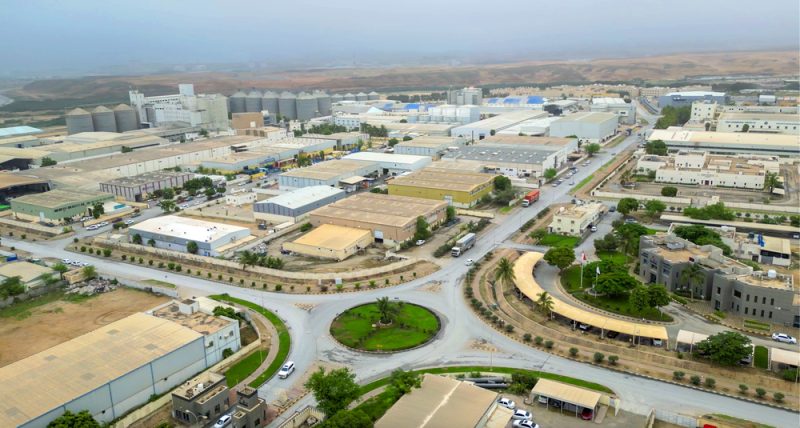
These projects and achievements have translated into better services through schools, hospitals, roads and public facilities that improve the quality of life in every wilayat. They also support a diversified economy with investments and that drive growth across the governorates, deliver a clean and sustainable environment through green projects that protect nature and contribute to the economy, and provide digital services that advance digital transformation and governance to make transactions easier and more transparent. They are accompanied by inspiring success stories represented by individuals who embody creativity and service.
The People and Society pillar serves as the foundation for many plans and programmes aimed at developing education, enhancing national capabilities, building a world-class healthcare system, strengthening national identity, and ensuring social protection and wellbeing.
The education sector, at both school and university levels, witnessed major transformation. Between 2021 and 2025, 188 schools were built or renovated. The national plan for digitising curricula for grades 1 to 12 was implemented, and the Noor platform for digital learning was launched. The platform offers high-quality interactive digital content accessible to students at any time and from any place. It also enables teachers to manage lessons and activities digitally. The first phase covers 140 schools. A vocational and technical education system was also introduced for students in grades 11 and 12 in nine specialisations including business administration and information technology in Muscat and North Al Batinah, and travel and tourism in Dhofar and Al Dakhiliyah.
In higher education, the University of Technology and Applied Sciences was established by merging technical colleges, applied sciences colleges and the College of Education in Rustaq. The University has more than 48,000 students across 11 branches offering 48 academic disciplines.
The innovation sector recorded several achievements, including establishing the Industrial Innovation Academy, which hosts six strategic programmes. Over the past three years, 360 young people have been trained and certified as industrial innovation specialists. More than 40 national factories and companies have benefited from the Academy’s services.

The healthcare sector continued upgrading its infrastructure. Al Mazyona Hospital opened in Dhofar, and three new hospitals are being built: the new Sultan Qaboos Hospital in Salalah, Suwaiq Hospital and Khasab Hospital. Sohar Hospital is also undergoing expansion.
These projects provide more than 1,800 beds and their construction costs exceed OMR 300 million.
Over the past five years, several major healthcare initiatives were established. These include the University Medical City, the Medical City for Military and Security Services, and the Central Public Health Laboratory. A number of private hospitals also opened, including the Oman International Hospital and Al Saada Hospital. New cardiac catheterisation units began operating in Sohar Hospital and Nizwa Hospital, alongside a new intravenous solutions preparation unit at Sultan Qaboos University Hospital and the Muscat Recovery Centre. Several pharmaceutical factories were also launched to localise medicine production, meet domestic demand and enhance non-oil exports.
The sector also recorded significant medical milestones carried out by national medical teams. These included the separation of conjoined twins, a heart transplant from a brain-dead donor, open-skull surgery while the patient was awake to remove a tumour, and a cochlear implant for a nine-week-old infant.
Within the People and Society pillar, the priority of social welfare and protection achieved notable progress. In culture, major institutions were established such as the Oman Cultural Complex in Muscat, the Oman Maritime History Museum in Sur, the Oman Across Ages Museum in Manah, the Majad Oman Museum in Sohar, the Fath Al Khair Centre in Sur, and the Visitors Centre in Bisya and Salut in Bahla. The past five years also witnessed a series of international cultural events promoting messages of peace and coexistence from Oman to the world. In this context, the Oman Wing opened at the Hermitage Museum in the Russian Federation, displaying 28 artefacts reflecting the historic Omani empire. The Message of Peace from Oman exhibition held more than 136 stops worldwide and its publications were translated into 29 languages.
In social welfare, the Social Protection Fund was established and, as of August 2025, serves more than 1.45 million beneficiaries. The number of insured active Omani contributors reached 598,000. The National Autism Centre was also established to provide high-quality therapeutic and developmental services from childhood to adulthood, with 222 beneficiaries to date. The centre implements joint projects and community initiatives in cooperation with local and international institutions.
The Economy and Development pillar focused on building a thriving, diversified and sustainable economy, strengthening private-sector investment, driving growth, and ensuring inclusive development across all governorates. This pillar also saw increased emphasis on developing capable economic leadership through programmes implemented by the Royal Academy of Management and the national One Government Team initiative.
In economic diversification, new mining projects were launched. These include the Shuwaymiyah minerals project in Shalim and Al Hallaniyat Islands, which targets producing 40 million tonnes per year of limestone, gypsum and dolomite. Other projects include the silica sand project, the Washihi mine, the Ghizayn mine, and exploration and mining of copper and associated gold in Block 10 in Yanqul, alongside the redevelopment of the Aseel and Al Bayda copper mines.
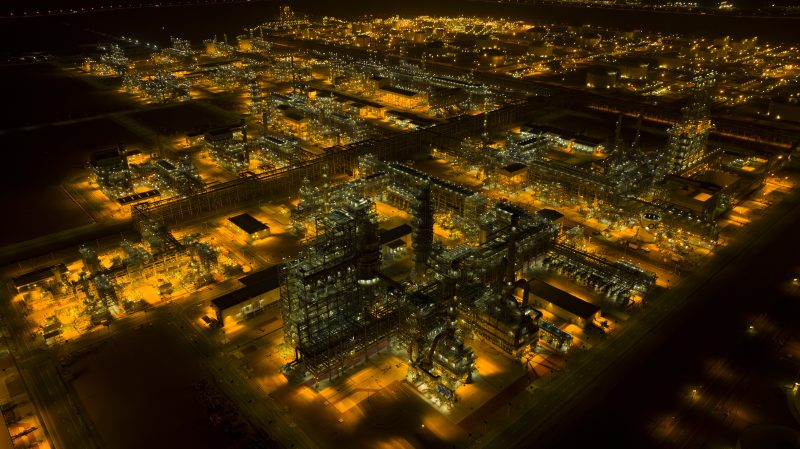
National factories in heavy and medium industries registered major progress. Duqm Refinery opened in 2024 with a production capacity of 230,000 barrels per day, increasing its capacity in 2025 to 255,000 barrels per day. The past five years also saw the launch of other major projects including the Salalah Ammonia Plant with an annual capacity of 365,000 metric tonnes of ammonia, the Karwa car factory in Duqm, the vanadium and niobium moulds plant supplying alloy manufacturers in the United States and Europe, the metallic silicon plant, and the aluminium wheel factory in Sohar, which has an annual capacity of 1.2 million wheels in its first phase.
The Sohar Advanced Industries Company was also established, focusing on advanced production technologies including reverse engineering, mould manufacturing and precision tooling. The company consists of three main centres: the Plastic Technology Centre, the Mould Manufacturing Centre and the Advanced Industries Centre.
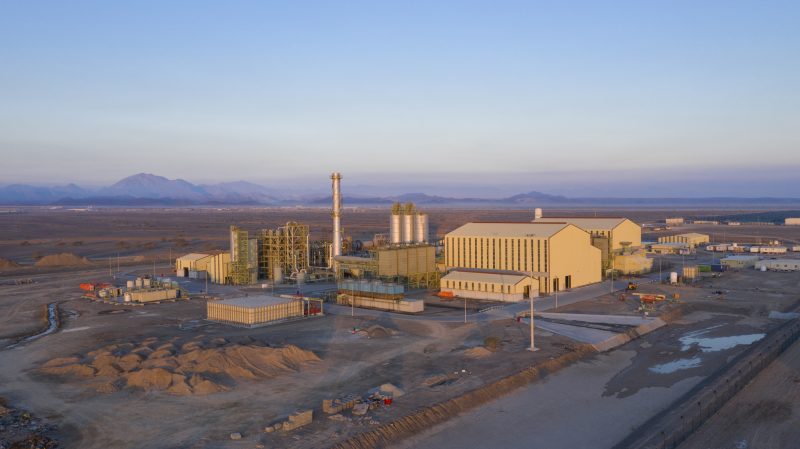
Next year, several major factories are expected to begin operations. The most prominent include the polyacrylamide plant in Sohar, which will be the world’s second-largest polymer producer, with investment exceeding OMR 115 million, and the Morad Turbine plant in Duqm which will manufacture equipment, towers and wind turbines with an annual capacity of 1000 megawatts. An iron ore concentration plant in Sohar is expected to begin operations in 2027.
Oman Vision 2040 places strong emphasis on the logistics sector. Recent years saw the implementation, completion and maintenance of major strategic road projects including the 725-kilometre Empty Quarter Road, the 71-kilometre Sultan Faisal bin Turki (Daba Lima Khasab) Road which had reached 48 percent completion by June, and the 27-kilometre expansion of the Rusayl Nizwa Road.
The past five years also witnessed the launch of the Asyad Container Terminal in Duqm and the establishment of the Hafit Rail Company, a joint venture between Oman and the United Arab Emirates, to link Abu Dhabi with Sohar. The railway will stretch 238 kilometres and the train journey between Abu Dhabi and Sohar will take just 100 minutes.
In tourism, efforts focused on developing key destinations through major projects such as Yiti Sustainable City and the 3-kilometre Muttrah Cable Car. The project is expected to open in the first quarter of 2026, offering a distinctive experience that reflects Oman’s identity and blends sea, mountain and city in a single panoramic scene.

Food security projects recorded notable progress. These include the Omani abalone farming project in Mirbat with an annual production capacity of 600 tonnes, the natural shrimp farming project with an annual production of 4,000 tonnes, and the Oman wheat production project in the Najd farms, which produces 10,000 tonnes on an area exceeding 6,000 acres.

Alongside the launch and construction of major economic projects, efforts focused on empowering national talent to work in these sectors through various programmes and initiatives. These include training for replacement or direct employment, the launch of the national integrated system for capacity building and talent management, and new platforms such as the Tawteen platform.
Work also centred on enhancing the investor journey in line with global developments and the needs of Oman’s economy. This work included the Invest in Oman Lounge and the Oman Business Platform, which aim to expand Oman’s global trade and attract more foreign investment. Investor facilities included the investor residence programme, the golden residency for investors and the Tas’ira programme, among other initiatives.
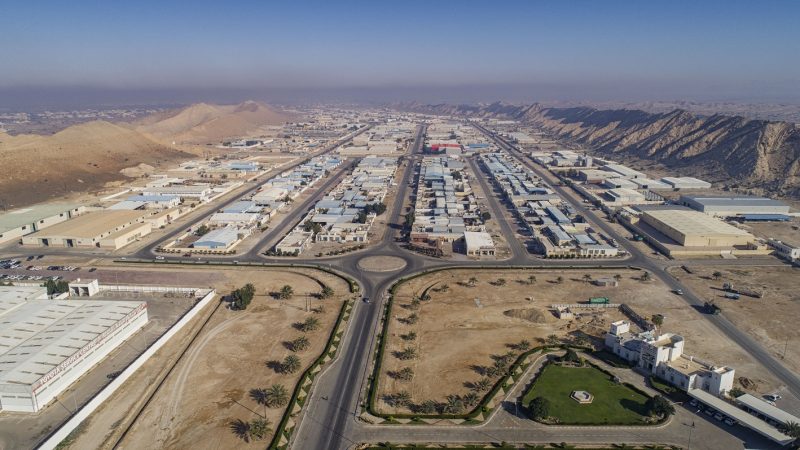
Efforts also focused on balancing investment between global companies seeking opportunities in Oman and small and medium enterprises aiming to contribute to economic and social development. In this context, the Oman Future Fund was launched with a capital of OMR 2 billion, allocating 90 percent to major projects and 10 percent to financing small and medium enterprises. Support for entrepreneurship also included the Promising Omani Start-ups programme and several other initiatives.
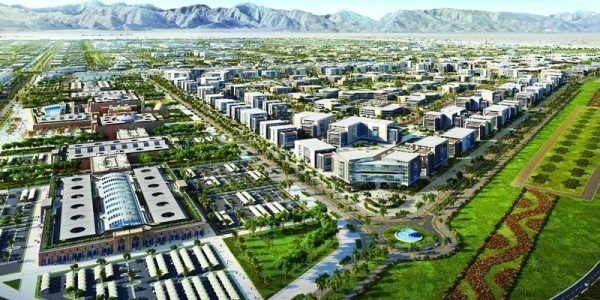
Over the past five years, Oman launched a wave of sustainable urban development projects. These include the Sorouh project, which aims to develop 18 residential neighbourhoods with 9,950 housing units. Sultan Haitham City is among the largest urban projects, covering 14.8 million square metres, accommodating 100,000 residents.
The Space Launch Port is one of Oman’s landmark projects and the first commercial spaceport in the Middle East and North Africa.
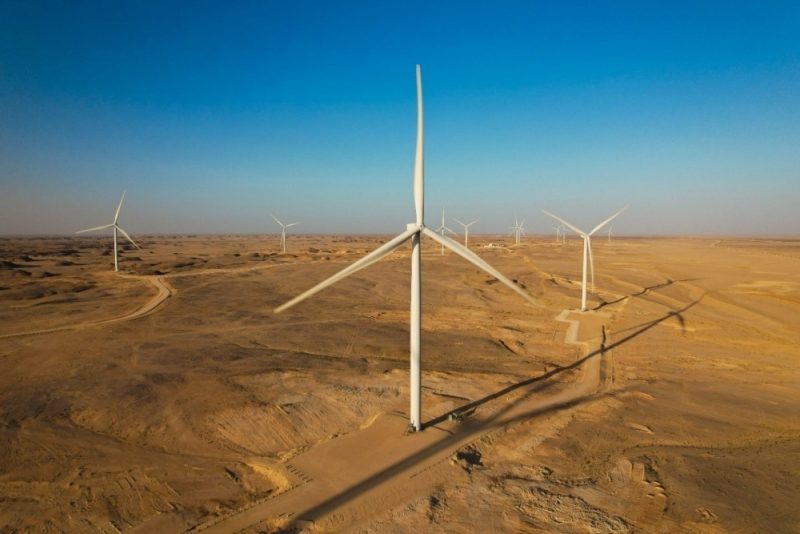
The Environment pillar, which centres on sustainable use of natural resources, saw the launch of major strategic plans and projects. These include the National Net-Zero Strategy comprising 212 projects and initiatives up to 2025. Hydrogen Oman was also established to oversee this emerging sector in both the national and global economy.
Several renewable energy projects were implemented, including the 100-megawatt Amin photovoltaic plant, the 25-megawatt Qabas Sohar solar project, the 500-megawatt Ibri 2 solar plant, and the Sur solar-powered desalination plant which supplies water to more than 600,000 residents in North and South Al Sharqiyah. Other projects include the Rima facility for treating oil-produced water, which handles more than 60,000 cubic metres daily, the Manah 1 and Manah 2 plants with a combined capacity of 1000 megawatts, the Jaalan Bani Bu Ali wind project with a capacity between 95 and 105 megawatts, the 50-megawatt Dhofar 2 wind plant, and several wind power projects in Mahout, Duqm and Sadah with total capacity exceeding 1000 megawatts.
Environmental sustainability efforts also included major green industrial projects such as the Vulcan green steel plant in Duqm, the Vale iron complex in Duqm, and the waste-to-energy project in Barka.
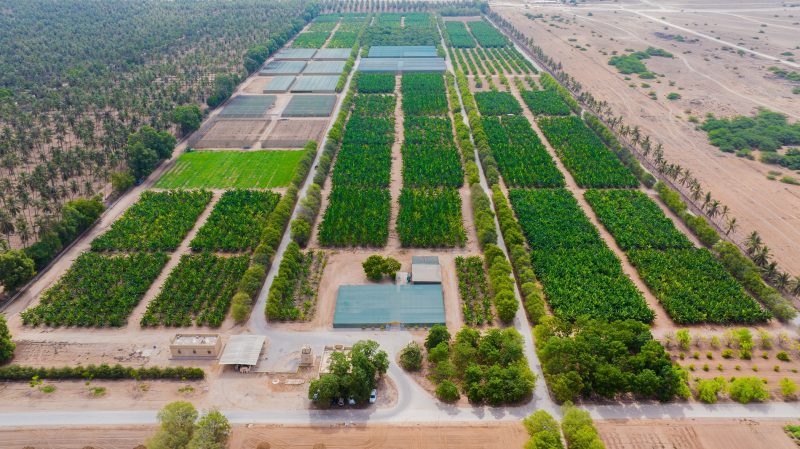
In sustainable tourism, five new nature reserves were established, bringing the total to 31 reserves and 33 environmental sites. The Botanical Garden in Seeb was created as the largest of its kind in the Arab world, with a database of more than 1,200 rare and endangered Omani plant species, and more than 40 cultivated varieties including fruits, vegetables and medicinal and aromatic plants. The tourism trail at the Royal Razat Farm in Salalah opened, and the Duqm Economic Zone Nursery was established to expand green areas in the wilaya by planting more than 5000 trees. The nursery also hosts agricultural experiments and serves as an incubator for new plant and tree species.
The sector also implemented the Green Mobility initiative through the National Green Transport Company, which developed an integrated electric transport system covering electric vehicles, charging infrastructure, digital platforms and technical services. The project aims to reduce CO2 emissions by 4.6 metric tonnes per vehicle.
A ship recycling project was launched as the first of its kind in the Gulf region. It converts decommissioned vessels into reusable resources using environmentally responsible methods, and supplies ships with electricity and green fuel. A clean-energy shore power project was also implemented at Sohar Port. Efforts continued to enhance water sustainability through new dams across several governorates, which also help protect residential and commercial areas from flooding.
The Governance and Institutional Performance pillar focused on strengthening public trust in the Omani judiciary through laws, initiatives and national programmes. These included issuing judicial inspection regulations to improve judicial performance, establishing the Investment and Commerce Court and related laws to resolve investment and commercial disputes and speed up case resolution, reducing the average appeal judgement time at the Supreme Court from 186 days in 2023 to 136 days in 2024, enabling remote hearings by video link, signing the Makkah Agreement on enforcing anti-corruption laws among members of the Organisation of Islamic Cooperation, and launching the Qadha e-portal to provide electronic access to judicial services.
Within the same pillar, several projects were implemented to create an agile administrative system that meets public expectations and serves citizens. These include the Tajawob platform, which facilitates submitting and tracking proposals, complaints, reports and enquiries in relation to government services, supporting community engagement, transparency and accountability.
The National Unified Government e-Services Portal was also launched. In the first quarter of this year, it facilitated 14.5 million digital transactions. The Wusool system recorded more than 17,000 active users, while the number of fully automated services delivered without human intervention reached 267, helping streamline procedures and improve digital efficiency in public services. The Government Projects Regulation and the Government Project Management Manual were also implemented to enhance oversight, improve quality, strengthen execution and ensure optimal use of public resources.




Follow us